One of the highlights of this bleak period in US history, known so far as 2025, is the generous cleavage of Lauren Sánchez, Jeff Bezos’s partner. During the presidential inauguration at the start of the year – and the subsequent media scandal surrounding her “obscenity” for daring to show – I was struck by a voluptuous pair of thoughts.
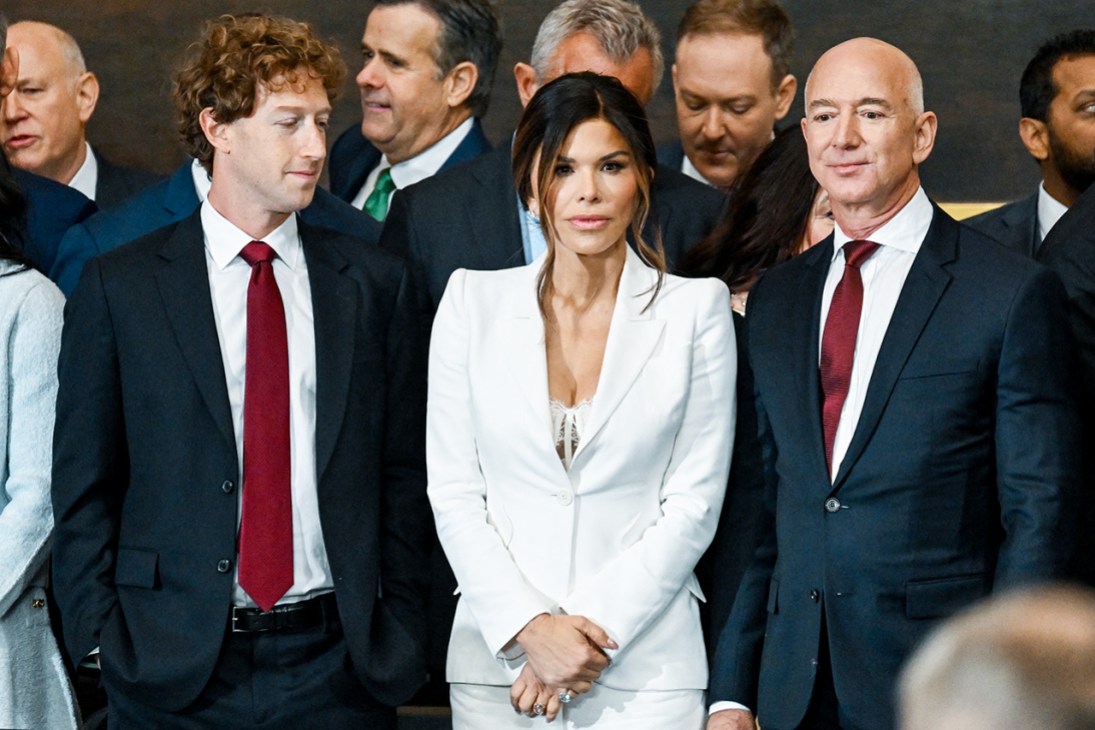
First, I was intrigued by Sánchez’s retro appearance. Her conspicuously augmented chest was so 1995, so defiant of the high-end designer fashion norms of billionaire-babe chic. While others sneered, I admired her resistance to convention and her courage to go with a vintage look. Here was a media-savvy 55-year-old with a pro-social offering of bosom. I think that she understood on some deeply embodied level how to upstage the 47th president of the US.
Second, I was vexed by the irony that my new book, Tits Up: The Top Half of Women’s Liberation, has been censored from ads and recommendations on Amazon, Bezos’s main business. It’s an unfortunate fact that the algorithms used to “protect the communities” of social media and online booksellers do not differentiate between pornography and women’s studies. As a result, women’s perspectives on their own bodies are being systematically suppressed. The media sanctions inflicted on Sánchez and me lead to a few historical questions: when did breasts become obscene or, for that matter, erotic?
Breasts became eroticised in 15th-century France when aristocrats delegated breastfeeding to wet nurses, freeing the maternal body to be visually and sexually claimed. Starting in the 1400s, French kings commissioned paintings to celebrate the pristine, weightless breasts of the mistresses who had borne their children, standing next to the heavy jugs of the wet nurses who fed them. It is no coincidence that, to this day, Paris has the lowest breastfeeding rates in the world and is also the global hub of the lingerie industry.
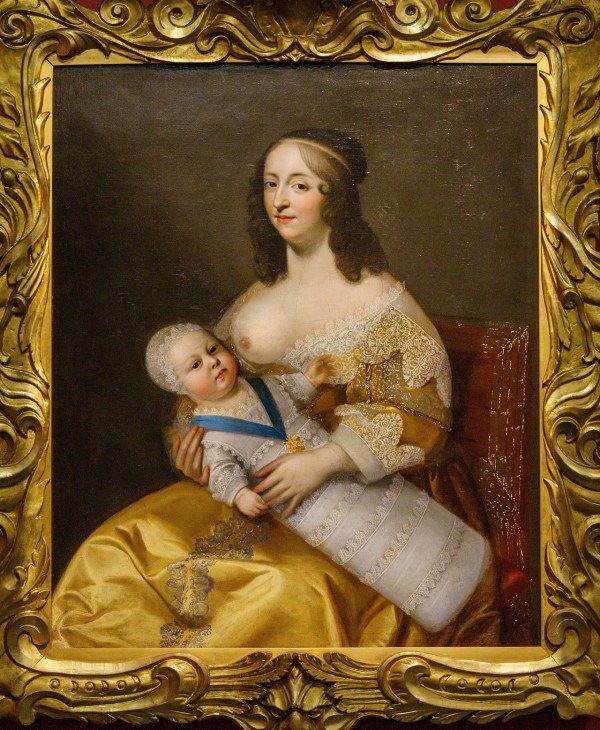
Breasts are not universally erotic. Anthropological evidence clearly shows that sexual attraction to them is most common in Europe and the Americas. In Indigenous communities where women wear no clothing above the waist and breastfeed openly, the sexual fetishisation of breasts is viewed as a juvenile perversion or bizarre foreign taste. Beauty paradigms in East Asia have long favoured flat chests and upheld traditions of breast binding among Chinese noblewomen and Japanese geishas. In most of Africa, the ideal breast has not been served up for the male gaze. In Dogon wood carvings from Mali, for example, the finest pairs have a long, conical shape that often points to a baby’s mouth.
Evidence of the intensifying vulgarity of breasts can be seen in the changing connotations of the word “tits”. Initially an innocent variant of “teats”, tits is at least a thousand years old and likely derives from the ancient Proto-Indo-European word tata. Tits were not profane until the early 20th century, when “tits and ass” entertainment proliferated in the form of burlesque shows. At that time, “tits” mutated into a salacious term for a monetised body part, one presented for the delectation of men, far removed from its biological purpose. Today “tits” is the number one word for breasts on the internet due to its function in navigating porn sites and sex-worker services.
There are hundreds of slang terms for breasts in the English language, most of which are used by men. White women in the Anglo world tend to talk about “breasts” or “boobs” – the latter being synonymous with idiots, hence booby prizes and booby traps. This gender discrepancy suggests that women have surrendered the definition of their top halves to men – and they aren’t even trying to contest it.
When I began researching the topic, I found it awkward to utter the word “tits” out loud. Then I spent many nights in “titty bars” talking to strippers. Sex workers deploy the word “tits” to claim ownership of their bodies in the jargon of their trade. Nowadays, it rolls off my tongue. “Tits” thwarts puritanical taboos and embraces sexual freedoms. When women who are happy with their own anatomy say it aloud, it is not demeaning. It’s a symbolic strategy that insists on reclaiming a body part.
This linguistic revelation led me to a love of the American showbiz expression “tits up”, which one woman might holler to another as she goes on stage. An alternative for good luck, “tits up” encourages a sister to stand tall, pull her shoulders back and succeed. In the UK, “tits up” means something has gone “belly up”, like a lifeless fish floating in water. It’s possible that the positive American meaning arose independently – a physical migration from “chin up” – or it could be that theatre people flipped the dead metaphor, making ironic use of the British idiom in the manner of “break a leg.”
In the first half of the 20th century, legs were the most fetishised part of women’s bodies. After being hidden for centuries beneath floor-length skirts, the sight of legs had the power to arouse. Between 1942 to 1951, for example, Betty Grable was Hollywood’s highest-paid actress and America’s most popular sex symbol. She was so celebrated for her legs that 20th Century Studios insured them for a million dollars. In 1953, a benchmark year in the sexualisation of breasts, Marilyn Monroe emerged as the world’s premier bombshell, starring in Gentlemen Prefer Blondes and appearing topless in the inaugural issue of Playboy.

Until the Second World War, the ideal breast in Europe and the Americas was modestly sized – often described in poetry as an apple. By the mid-century, mass-produced pasteurised formula was widely available. With the rise of bottle-feeding, breasts became “free” to fulfil their new role as titillators. This fundamental shift in the use of women’s top halves, combined with the hyper-visualisation of films and picture magazines, led to the mega-bust.
The arc of the media’s big-boob obsession starts with the instant success of Playboy and runs through to the final episode in 2001 of Baywatch, the television show that featured Pamela Anderson as a buxom blonde lifeguard. This period idealised supersized breasts in the same way that the porn industry valorises large penises. Since 2007, surgical breast augmentations have declined and sales of push-up bras have plummeted. While breasts continue to bounce across our screens, they do so without the same volume in all senses of the word.
It is with all this in mind that I appreciate the invincible orbs of Lauren Sánchez. I respect her choices. I admire her honest-to-goodness boob job. I’m delighted that she is out and proud. On that cold day in January, I also appreciated her suffragette-white pantsuit, which I assume was a nod to women’s rights and the fight for our bodily autonomy. So, thank you, Lauren. Tits up to you, sister. Wishing you all the best on the big day. A world desperate for distraction can’t wait to see what you’ll be wearing.
Thornton is a sociologist and the author of four books, including the international bestseller ‘Seven Days in the Art World’. A resident of San Francisco, her latest book ‘Tits Up: The Top Half of Women’s Liberation’ is out now in paperback.
Quality of life – but what kind of quality? And what kind of life? These are the questions now facing New Yorkers as they embark on the first steps in choosing their city’s next mayor. Early voting is well underway for the 24 June Democratic Primary, which sees former New York state governor Andrew Cuomo essentially tied with 33-year-old state assemblyman Zohran Mamdani. The winner will then face off against current mayor Eric Adams, once a Democrat and now running as an Independent, who’s opted to sit out the highly contested primary and prepare for the general election in November.
Mamdani makes for an improbable frontrunner. Beyond his age, Mamdani – son of noted filmmaker Mira Nair – is also a registered socialist whose platform is laden with policies such as free childcare and public transport, a freeze on rents and reducing president Trump’s ability to arrest illegal migrants. But crucially, Mamdani wants to invest in a new, unproven Department of Community Safety rather than increase funding for the NYPD. The department, according to his plans, would have a $1.1bn budget to provide services such as mental health response teams instead of police in certain scenarios. Mamdani’s policies would drastically change New Yorkers’ quality of life – but for better or worse they represent a starkly different approach to his competitor.

Cuomo, by contrast, is a seasoned political pro and scion of New York’s most prominent political family. His campaign, at least on the surface, echoes Mamdani’s call for a more liveable, affordable, Trump-free New York. But Cuomo wants to expand, rather than downsize, the police.
Five years after the pandemic, New York – or at least New Yorkers – must figure out what kind of city it wants to be. Is Mamdani’s vision of a more radical, yet more equitable, urban landscape actually viable? Can a city contending with double-digit increases in violent crime numbers rely on citizens rather than cops to maintain an already fragile public order?
Meanwhile, the city is swimming in venture capital. According to a May report from the Center for an Urban Future, a think-tank, New York finds itself in the swell of a tech wave that is adding more jobs to the city than any other sector. This shift is luring the exact type of ‘elite’ young professionals that Mamdani is counting on: highly educated, suspicious of authority, well-paid and open to risk. And Mamdani is certainly a risky choice, as evidenced in a recent New York Times comment piece declaring his agenda “uniquely unsuited to the city’s challenges.”
Considering the outsized power wielded by New York’s City Council, much of Mamdani’s agenda would likely be constrained if he were to become mayor. But his win would send a strong message to other big Democratic-run cities – most notably Chicago and Los Angeles, both of which are also experiencing crime spikes, migrant crises and White House ire – that progressive policy can still cut through with the electorate.
Cuomo is a vote for the status quo: hard on crime, soft on investment – a nod to a middle-class New York somehow managing to survive. While a win for Mamdani – young, Muslim, an immigrant and with relatively radical policies – would be a win for uncertainty, and a shift toward the policies found in progressive cities across Western Europe that are largely unknown here in the US. Both men have a strong chance at winning. But can the same can be said for New York (and its precarious quality of life)? The jury is still out.
Kaufman is an editor and columnist for the ‘New York Post’. For more opinion, analysis and insight, subscribe to Monocle today. And if you’re also struggling to make a decision about how to get the best out of New York, why not check out our City Guide?
It’s hard not to be seduced by the French Riviera – a sun-drenched coastline where cerulean waters meet terracotta towns. Sure, it’s also known for flashy Ferraris but a more considered visit takes in its timeless elegance, hilltop views and quiet coves.
Here, you’ll find our selection of hotels offering tranquility away from the summer crowds of the Côte d’Azur. And to help you find your feet, the head concierge at Hotel du Cap-Eden-Roc, Antonio Casinhas-Travassos, shares his under-the-radar recommendations for those keen to venture out from one of these peaceful bases.
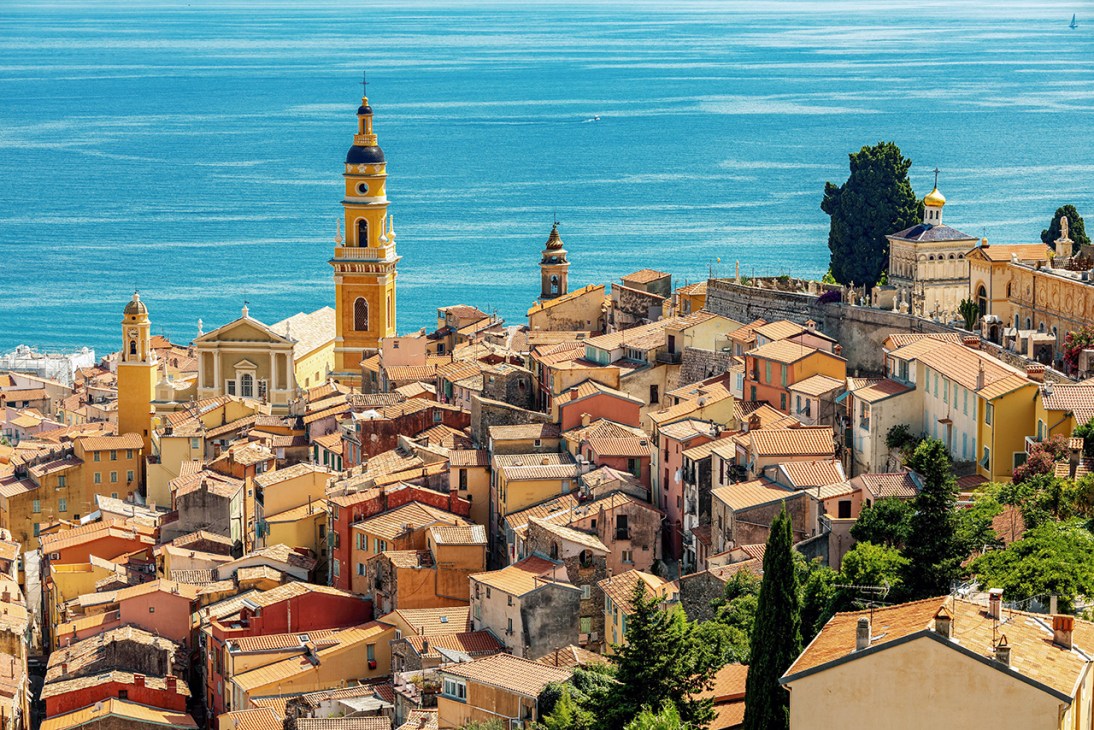
For a leisurely walk, Travassos suggests Le Sentier du Littoral, a coastal path that starts at Plage de la Garoupe. “It offers dramatic views of the Mediterranean, hidden coves and a surprisingly wild natural landscape,” he says, adding that “it’s especially magical at sunrise or sunset, and parts of it feel completely untouched by tourism.” Though it’s more of a leisurely stroll than a mountain hike, Travassos suggests decent shoes as some parts are rocky and can be slippery.
If you’re considering prizing yourself away from squashy mattresses and coveted loungers for a daytrip, Travassos encourages a visit to Saint-Paul-de-Vence, a picturesque hilltop village full of artistic heritage. His highlight? Exploring the Fondation Maeght, a modern art museum tucked away in a peaceful pine forest, featuring works by Joan Miró, Alberto Giacometti and Marc Chagall. “After the museum, I love heading to Château Saint-Martin & Spa for a leisurely lunch. The setting is breathtaking, with panoramic views over the Riviera, and the cuisine is as refined as the surroundings. It’s the perfect blend of culture, history and indulgence – all just a short drive away.”
If that’s enough to tempt you to the Riviera this summer, here’s some hotels that we’re sure you’ll find more than suitable.
The best stays in the French Riviera
1.
Nice
Before heading west from the airport, it’s worth spending some time in Nice’s Hôtel du Couvent. Its 2024 opening has been part of the city’s major revival, which has been drawing a cooler crowd. When the owner, Valéry Grégo, stumbled upon the magnificent building, it was totally dilapidated. The former nunnery was completely overhauled by husband-and-wife design duo Charlotte de Tonnac and Hugo Sauzay, with decor that includes wooden furniture, modest paintings and natural linens. It is understated and restrained, unlike anything that you might expect to find on a coastline otherwise dominated by glitzy villas and over-the-top hotels. Though the property is set in the centre of Nice, it feels worlds away from the busy city. Below ground, you’ll even find peaceful Roman baths.

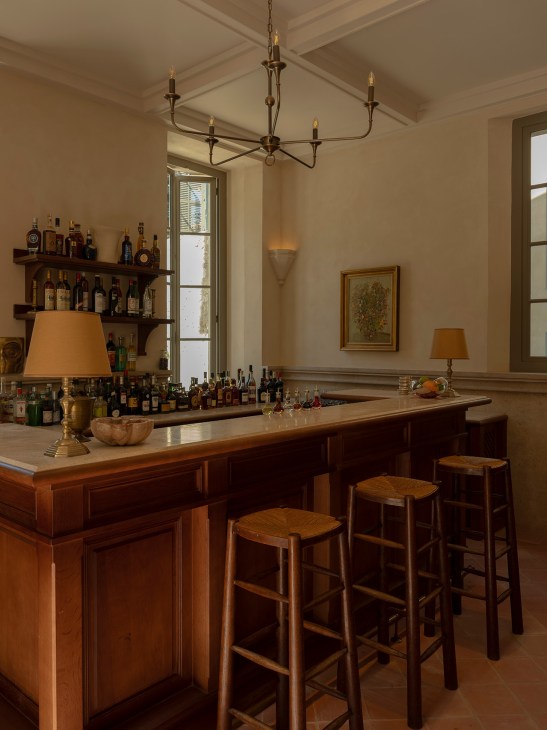
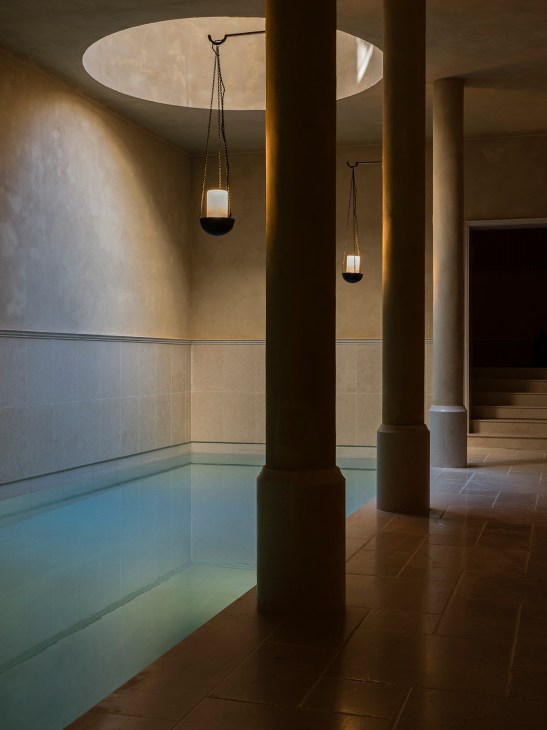
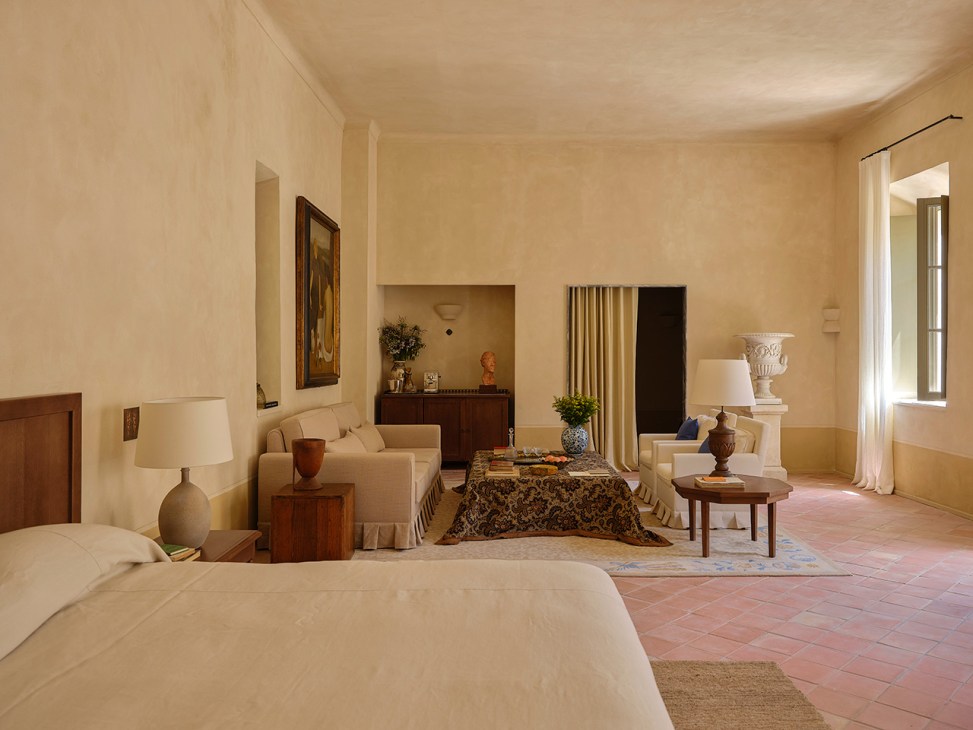
2.
Antibes
When you eventually decide to head west, make your way straight to Hotel du Cap-Eden-Roc in Antibes, which remains one of the area’s most timeless and elegant escapes. The ocean-facing hotel, set on a 22.5-acre property with a grove of ancient pine trees and a carefully clipped rose garden, has been a staple along the coastline since the late 1800s. It has a storied past, once welcoming guests such as Ernest Hemingway and Marlene Dietrich. In the 1960s, Chagall famously sketched inside the oceanside cabanas, which are rentable today.
The hotel remains a draw for those shying away from the spotlight and crowds. The rooms – either in the main house or down by the ocean – offer complete privacy, with windows and doors that frame the turquoise sea. At The Grill restaurant, patrons order magnums of rosé and platters of fresh fish.
Those looking for even more peace and quiet can check into the newly opened Villa La Guettière, a nine-suite Provençal-style house on 6,500 sq metres of secluded gardens, which is a two-minute drive away and forms part of the hotel’s villa collection. Inside the terracotta-roofed cottage, walls are lined with staggering artworks such as a painting by Tom Wesselmann and a print by Takashi Murakami. Days here are spent lounging by the pool that rolls onto a lawn or eating long lunches under the wisteria-covered patio backed by the Med.
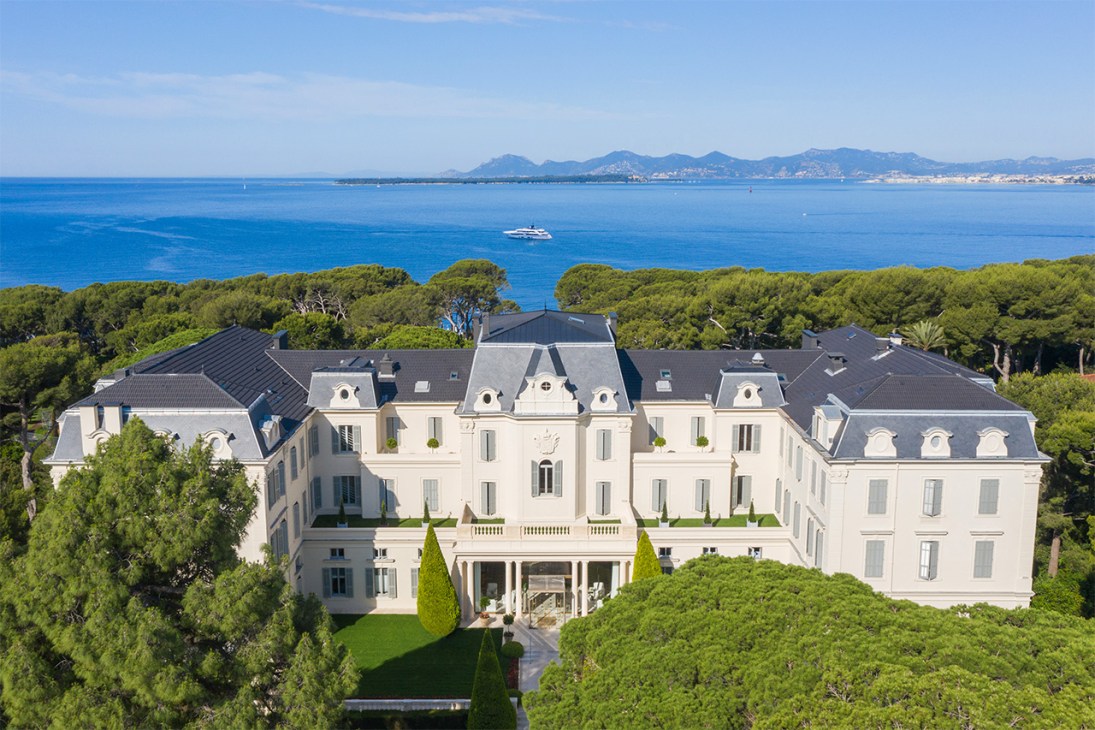
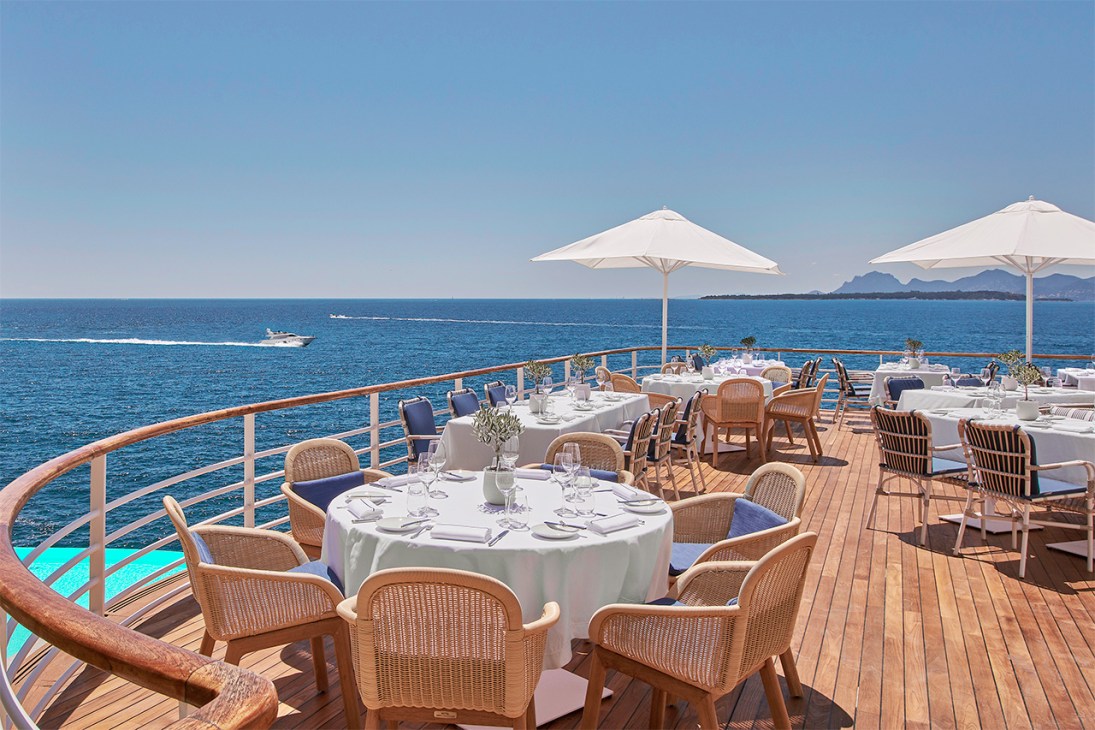
3.
Théoule-sur-Mer
Château de Théoule, which opened in 2024, also offers a surprising pocket of calm from the chaos. Set in an old soap factory about 30 minutes’ drive from Cannes, in the town of Théoule-sur-Mer, the property is carved into the cliffside. Relaxation is the order of the day here, whether it’s soaking up the sun on rosy-pink sunbeds under fringed umbrellas on a private slice of the Plage du Château, or lingering over a steaming bowl of squid tagliatelle in the restaurant’s breezy terraces.
4.
Saint-Raphaël
Continuing even further west, those looking for something more low-key can check into Les Roches Rouges in Saint-Raphaël, which was recently expanded by Paris-based studio ASL. A bright white mid-century building with nods to modernist architecture, the studio kept the spaces simple, allowing its surroundings – the shimmering Mediterranean and red hills of the Estérel – to shine. The infinity pool is a treat in itself, offering incredible views over an endless sea.
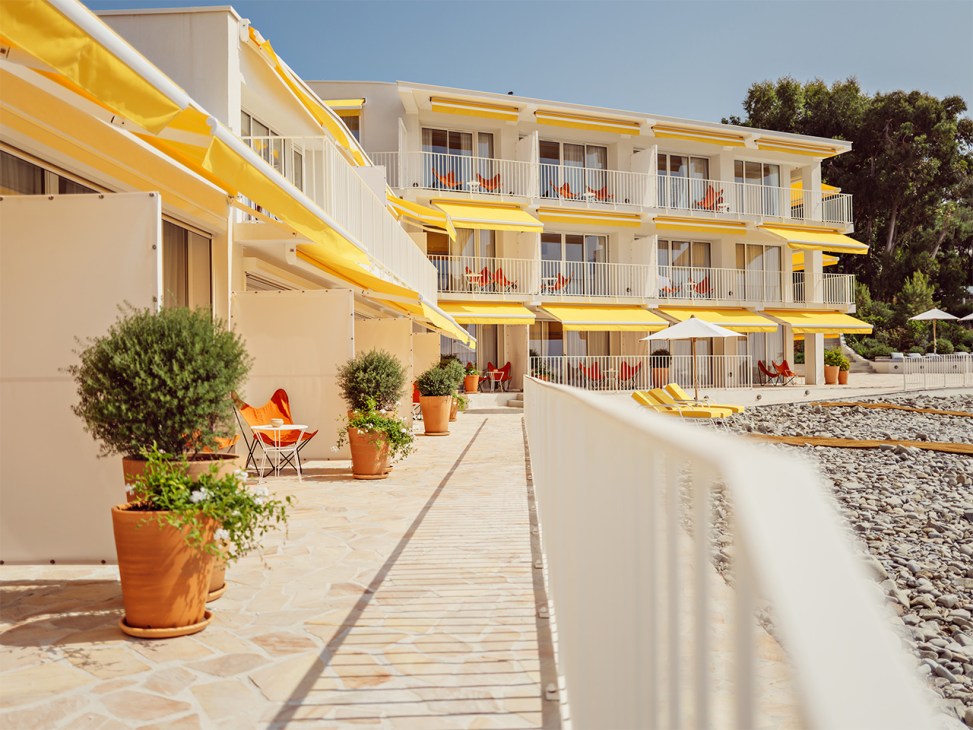
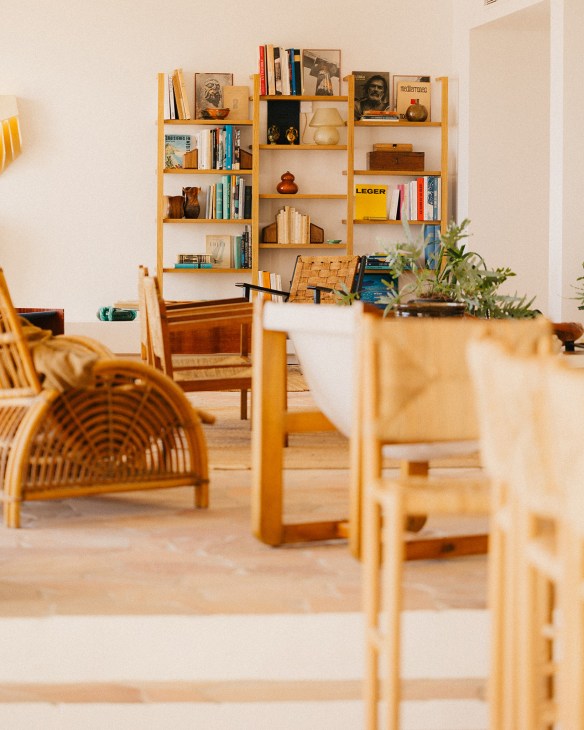
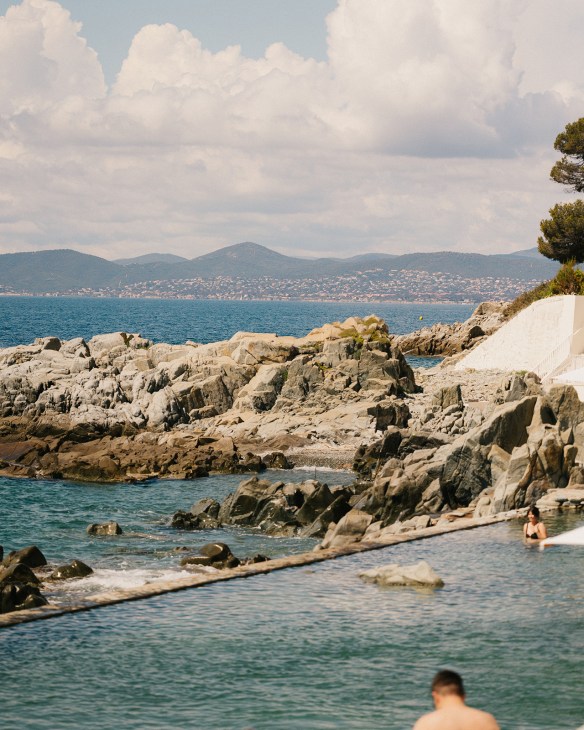
By the time we finished the final interview at our pop-up Monocle Radio booth at the Abu Dhabi Infrastructure Summit and recorded a special edition of The Urbanist (you can listen in here), it was still only 16.30. So, displaying a distinct lack of team spirit, I left my colleagues Carlota and Steph to pack up all the kit – what a gentleman – and ordered a Careem to take me to the Abrahamic Family House.
You might have visited, many have, including president Trump when he came to town, but I hadn’t and had yearned to ever since it opened in 2023. And I am so happy that I did. Whether it was induced by the enveloping heat or the sky beginning to blush evening pink, or perhaps the gossiping mynah birds playing in the white-blossomed frangipani trees, the Abrahamic Family House proved to be a moment of staggering, overwhelming, soaring-to-the-heavens beauty.
Designed by Ghanaian-British architect David Adjaye, the site contains a mosque oriented towards Mecca, a church that faces east to the rising sun and a synagogue that looks towards Jerusalem. No one place of worship dominates, they are all made from the same materials and share, of course, a design language. They are also surrounded by a raised-platform garden that – when it’s not 35C – acts as a realm where all faiths can congregate.
You navigate between the buildings via a cool central hallway. I began in the church where a vast starburst made from thousands of wood pieces shoots from the epic heights of the ceiling. A security guard on his break came in and found a place among the pews to kneel and pray, occasionally looking up at the ceiling, to God. In the synagogue, entered via a simple, perfect corridor, two Jewish men sat talking. But the mosque was perhaps most breathtaking because the dipping sun was at that very moment filtering through the mashrabiya screen and creating heavenly beams of light. A lone worshipper stood in one corner, his face patterned with lace-like shadows.

But what was also moving were the tiny and often incidental signs of generosity and kindness at play. A feral tabby cat was curled up asleep in the air-conditioned lobby. I bent down to take its picture and a security guard caught my eye and smiled – clearly, he’d taken the executive decision to allow an animal respite from the heat. In an internal garden, hanging from one of those frangipani trees, a bird feeder. There were pools of water where doves were quenching desert thirsts. Even the gift shop was a moment of gentle perfection.
The UAE commissioned the Abrahamic Family House – named after Abraham, who plays a key role in all three of these religions – to bring people of different faiths together, to focus on a shared humanity. To celebrate diversity and peaceful coexistence. Good on them. That’s also what made the Abrahamic Family House feel so enlightened, so special, because across the Persian Gulf rockets were screeching through the evening’s delicate skies, destined to kill and destroy.
But aside from faith and spirituality, the Abrahamic Family House is also testament to the power of architecture to move us, change us. While we were at the summit, I got talking to an architect who said that one of his professors had told him that his work would carry the potential to make people fall in love – or divorce (he joked that he might have been responsible for more of the latter). And it does have that power.
This is also why a summit about infrastructure turned out to be so interesting, because Abu Dhabi is trying to use architecture to create communities, to make the emirate not just liveable but loveable. They see and understand its potential to improve people’s health, its ability to help people live full lives in the face of physical challenges and to deliver the sublime.
PS. Team Monocle regrouped at Louvre Abu Dhabi, then headed to the 421 Arts Campus and ended up having pizza at Marmellata. So, I think my ungentlemanly behaviour was forgiven. Almost.
Upbeat, optimistic and creative – that’s the mood in Hong Kong’s hospitality sector, according to the general managers (GMs) of some of the city’s top luxury hotels. Crisis mode is over, they say, and Asia’s favourite business hub is primed for a strong second half of the decade with new openings and new infrastructure in the pipeline. There’s still plenty of work to do to win back long-haul travellers and nudge room rates back to where they were before the coronavirus pandemic but, as ever in Hong Kong, the private sector is leading from the front. Hotel owners and bosses are putting competition aside and working together to co-ordinate marketing efforts and shift the narrative. Monocle took the opportunity to join one of these friendly get-togethers for a conversation about technology and talent at one of the best tables in the city.
Our panel:
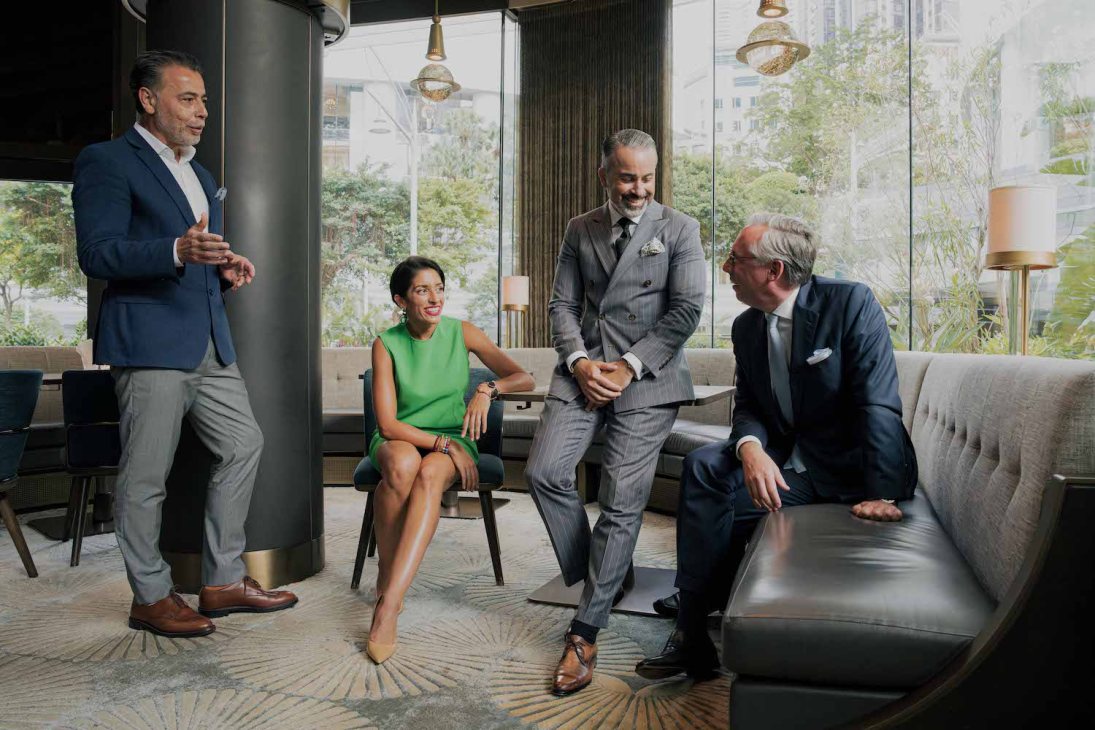
The Old World standard bearer
Christian Poda, Four Seasons
Hospitality runs in Poda’s family, with three generations working in hotels and restaurants. The Berliner cut his teeth in his hometown, learning the ropes at The Kempinski Bristol Hotel and Palace Hotel before beginning a long career at the Four Seasons. Poda has since spent much of his career in Asia, returning to Hong Kong in 2022 to lead the Four Seasons, the venue of the UBS Asian Investment Conference 2025.
The globetrotter
Michel Chertouh, Regent
Chertouh’s almost 40-year career at Intercontinental Hotels & Resorts has taken him around the world, with postings in Paris, London, Rio de Janeiro, Miami and Tokyo. A graduate of the École Hôtelière de Paris, the dual French and Brazilian citizen landed in Hong Kong in 2021 to become the general manager of the new-look Regent. The 497-room hotel on Victoria Harbour reopened in 2023 after a three-year overhaul by Chi Wing Lo.
The hometown host
Kristina Snaith-Lense, Upper House
Born in New York and raised in Hong Kong, Snaith-Lense has spent most of her 20-year career in hospitality at The Upper House, the André Fu-designed property in Swire Hotels’ House Collective. Before joining as director of guest experience in 2012, she spent two years at The Landmark Mandarin Oriental in Hong Kong, her first managerial role after graduating from Switzerland’s École Hôtelière de Lausanne.
The high flyer
Anas Bencheqroun, Ritz-Carlton and W
Bencheqroun currently oversees two neighbouring hotels in West Kowloon for Marriott, including the world’s highest, the 312-key Ritz-Carlton on the top floors of the icc, Hong Kong’s tallest skyscraper. Bencheqroun began his 20-plus-year career in hospitality at The Four Seasons in Paris before joining Marriott in 2013. He returned to Hong Kong’s loftiest lodgings in 2021 as manager before landing the top job and taking over responsibility for the W.
This is a convivial after-work drink, but aren’t you supposed to be competitors?
Kristina Snaith-Lense: We see each other most frequently at international trade shows. At ILTM in Cannes last December we talked about the need to promote Hong Kong as a group. When we returned, we began organising monthly lunches to discuss how we’re selling the city to the international market.
Christian Poda: We’re competitors but we all love Hong Kong. So we want it to do well. For a while the city had a very bad narrative but it’s much better this year.
Michel Chertouh: Overcoming that narrative has been a sacred journey, not just for the government and the tourism board but also for us in the hotel industry.
What are occupancy rates like?
Anas Bencheqroun: We are all at above 70 per cent. The first quarter was quite strong, markedly better than last year.
KSL: With the Kai Tak stadium now open, we finally have a world-class venue. Having Coldplay as the first international act there was huge. But it’s crucial to keep that momentum going.
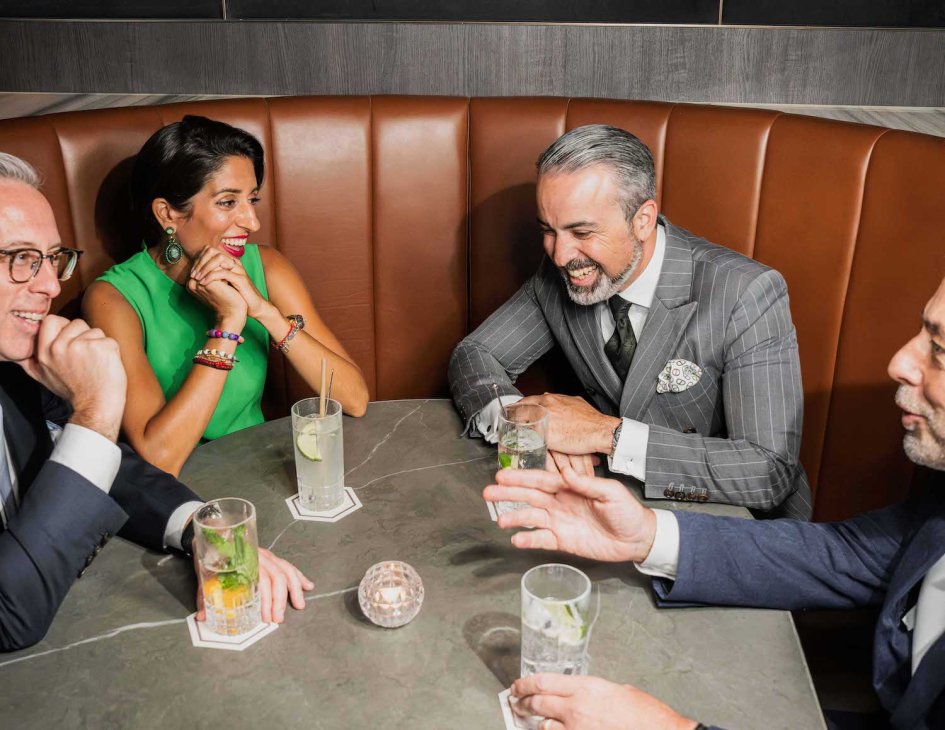
Who hasn’t come back yet?
KSL: The US market hasn’t fully recovered. But new ones have emerged, such as the Middle East and Russia.
AB: India is strong for us.
MC: Southeast Asia is back but Europe and Japan are still a challenge.
What more could Hong Kong be doing?
MC: It’s all about telling Hong Kong’s story from fresh angles and new perspectives. It’s less about infrastructure and more about branding. That’s where the private sector comes in. We can’t rely solely on the government. It’s up to us to reimagine the city and present it in a compelling light.
Kristina, your guests can now find a dry bag in their room’s closet, alongside the usual shopping bag and umbrella. What does that say about the type of luxury traveller coming to Hong Kong?
KSL: We’re seeing more people wanting to explore the hiking trails and the outlying islands. We need to be showcasing experiences that go beyond just dining and shopping.
MC: We are noticing a shift in demographics. There’s a younger clientele coming in from mainland China, whereas before the pandemic, the crowd was older. With that shift, you see changes in behaviour too.
Could you give us an example?
MC: Drinking habits have shifted quite noticeably. People are opting for quality over quantity. There’s also a broader trend away from alcohol.
CP: We see the biggest shift in our Michelin-starred restaurants. Guests are still eager to dine there but their preferences have evolved. Instead of a three-hour tasting menu, they prefer a 90-minute meal and they want to eat less.
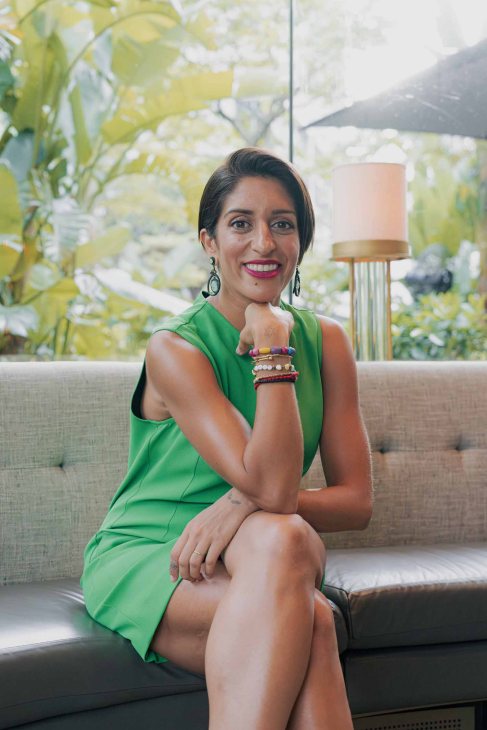
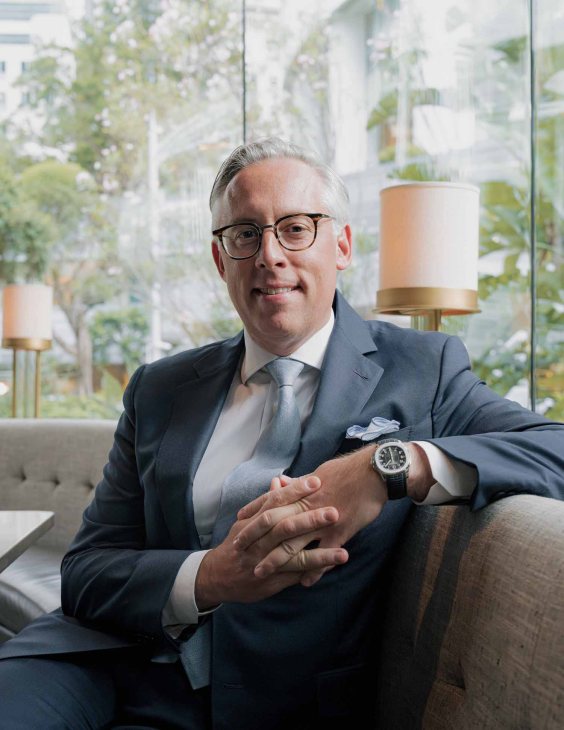
What are your guests telling you about technology? Are they saying that they want more – or that they want a break?
AB: They want more but also to be given a choice about it. Luxury is all about having the choice, so we need to provide the technology for people to use.
MC: And make it simple.
CP: Sometimes give more, sometimes give less. It really depends on the occasion.
How is your role as GM changing?
CP: Today we run serious, complex businesses. I oversee 900 employees and a multi-million dollar-per-year operation. That marks a real shift from the past. The romantic notion of simply being a hotelier is increasingly giving way to the demands of a CEO.
How much face time do you tend to have with guests?
CP: Probably about an hour a day – not as much as before because there’s a lot that can’t be managed from the lobby.
AB: I shouldn’t be spending more time at the desk than in the lobby but the balance has shifted. GMs from 10 to 15 years ago didn’t have the data that we have today. Whether it’s guest satisfaction or KPIs, the data helps us to manage our businesses better but it’s also taking us away from the operation.
MC: But it’s still an industry that requires you to give a lot of yourself and to invest your heart into it. I believe that you need to spend time with the guests and we’re not spending enough.
Hong Kong’s most recent big openings were the Rosewood in 2019 and the Regent in 2023. What do you think will be next?
MC: When you compare Hong Kong pre- and post-pandemic, the evolution is remarkable. With all the launches this decade – West Kowloon Cultural District, the stadium, the airport expansion – the city has never been static. It’s incredible to see that, against all the odds, Hong Kong has continued to invest and progress, and evolve to where it is today.
KSL: Kimpton is opening later this year and Andaz is opening in the next few years.
MC: That lifestyle element was probably missing from Hong Kong.
AB: Yeah, we only had the W. Now I will have some competition.
KSL: Aman is also looking for a site.
AB: Bulgari too. Everybody is looking.
CP: Think of the quality of hotels here, at a price point that is, frankly, much lower than in pretty much any other key gateway city. Compared to London, Paris and New York, Hong Kong is a bargain.
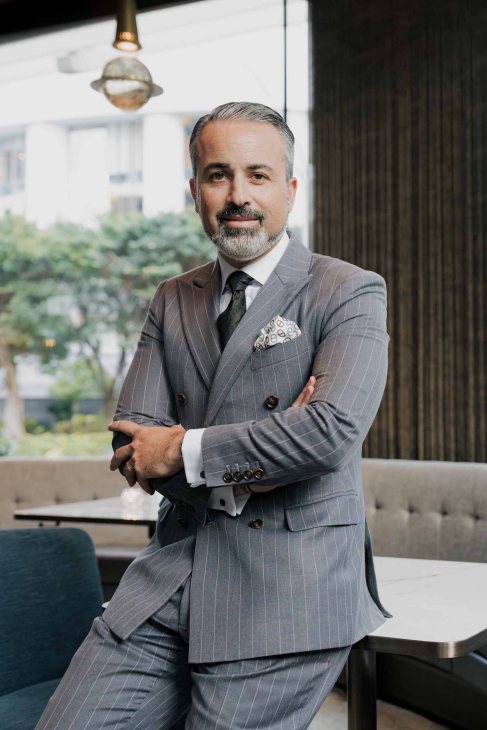
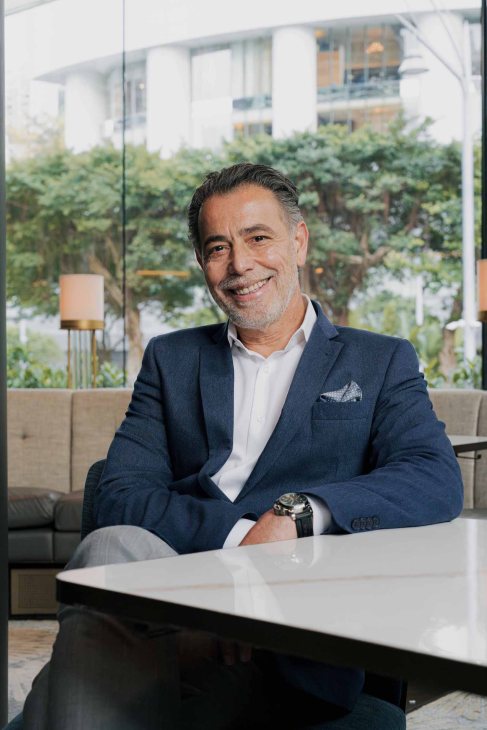
Which city is Hong Kong’s biggest competitor in Asia these days: Singapore or Shenzhen?
KSL: Shenzhen. We have seen it, especially over the Easter break this year when about two million people left Hong Kong. We know that a huge number went to the Greater Bay Area.
AB: Neither. It’s Tokyo. Because a large part of our business is coming from mainland China and their spending in Tokyo has tripled. That increased spending would usually have come to Hong Kong.
MC: Tokyo and also Bangkok, which has evolved as a dining destination. Hospitality there has improved too.
CP: If you want to do business with China you have to be in Hong Kong, not Singapore or Tokyo. Shenzhen is so cool but that’s good for Hong Kong. I know it’s a competition, in a way, but Hong Kong has a prime role to play in the Greater Bay Area. We just need to figure out how to coexist. Short-term pain, long-term gain.
AB: With more synergies between the cities around us, such as Shenzhen and Guangzhou, we could easily become the Silicon Valley of Asia. Business travel is still lagging but we see the demand coming back. And with what’s happening in the world right now, Asia will definitely be a destination for new businesses.
What’s your single biggest challenge – or perhaps headache – for the second half of the year?
AB: Finding and holding onto people. The numbers in hospitality education have dropped by 30 per cent compared to before the pandemic. And there is a good 20 per cent of the workforce moving out, so we have to be careful.
KSL: One challenge for us is rates. We need guests who are willing to book premium room categories to achieve those pre-pandemic rates.
MC: Visibility is an issue too. Last-minute bookings have become a trend, adding complexity to staffing and making it harder to plan investments in activities.
CP: We need less volatility and an easing of global tensions. I was really scared after “Liberation Day” [in April, when Donald Trump announced sweeping new tariffs] but now I feel a lot better again. If the world’s number one and two economies can get on better, it would be amazing for us.
This article originally appeared in the Opportunity Edition newspaper 2025, created in collaboration with UBS for its Asian Investment Conference in Hong Kong.
Parisians have the palatial expanses of the Louvre. New Yorkers have the Met’s wings, partially extending into Central Park. Londoners have the halls of the National Gallery. Yet, in comparison with their French and American counterparts, the buildings that house Britain’s primary collection of European paintings are comparatively diminutive.
In 2018, New York-based Selldorf Architects was appointed to redesign the National Gallery’s Sainsbury Wing. The remodel was heavily criticised when it was publicly announced in 2022, particularly regarding the removal of the building’s non-structural columns. Despite the controversy, the project has proven a success: its emollient results are exactly the salve the gallery needed.
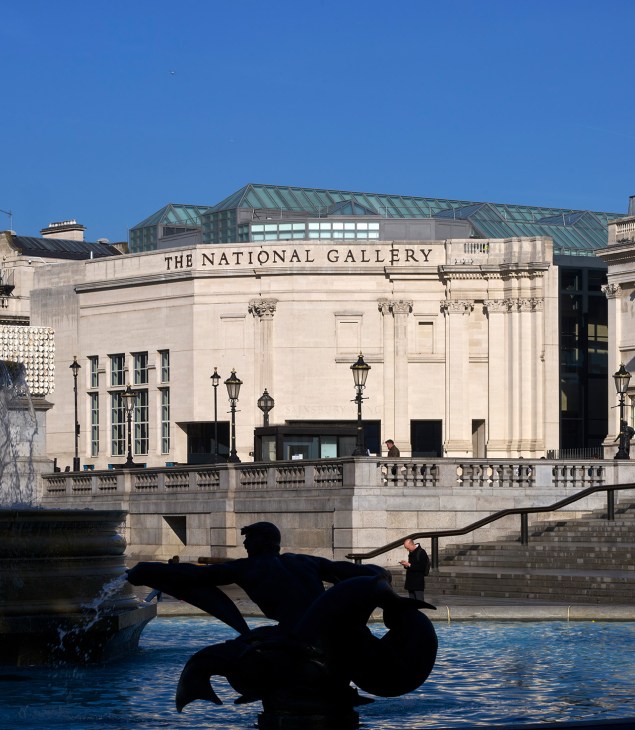
The Sainsbury Wing is perhaps best remembered for King Charles III’s infamous “monstrous carbuncle” comment, which single-handedly scuppered its unrealised predecessor. But even the “much-loved friend”, the original building by William Wilkins that the wing extended from, was derided for its dowdy neoclassicism when it was built in 1838. This latest reworking was not only to mark the gallery’s bicentennial but also an overdue fix of what other national museums take for granted: instead of having to climb the stairs from Trafalgar Square, visitors now have a clear, accessible main entrance via the Sainsbury Wing.
The Sainsbury Wing extension was originally designed by American postmodernist architecture duo Robert Venturi and Denise Scott Brown in 1991. It was given Grade I listed status in 2018 – Britain’s highest heritage conservation protections – at the tender age of 27. What’s being protected feels like a compromise: as you enter, an eclectic jumble of self-referential jokes play out the tensions between architects and clients in built form. “It’s like having an argument with the building,” says the project’s heritage architect Alasdair Travers. And not only with the building but also with its defenders. The new redesign by Selldorf Architects was vociferously resisted by critics, eight former presidents of the Royal Institute of British Architects and even Scott Brown herself.

Despite the noise, Selldorf has hit the right tone. The Venturi-Scott Brown’s masterful façade – a mannerist remix of Wilkins’s classical elements – remains as one of the cheekiest exteriors in the city, albeit with almost illegible signage. Within the structure, double-height spaces carve room to breathe out of the previously crypt-like ceilings. The smoked glass, a puce-tinted hangover from the 1980s, has been banished. And yes, the cutesy Egyptian columns remain.
The upper level of galleries, which was described by its director Gabriele Finaldi as “practically perfect”, remain unchanged. Instead, we are treated with a resplendent rehang, where the original enfilades of sandstone archways boast newly-placed works.
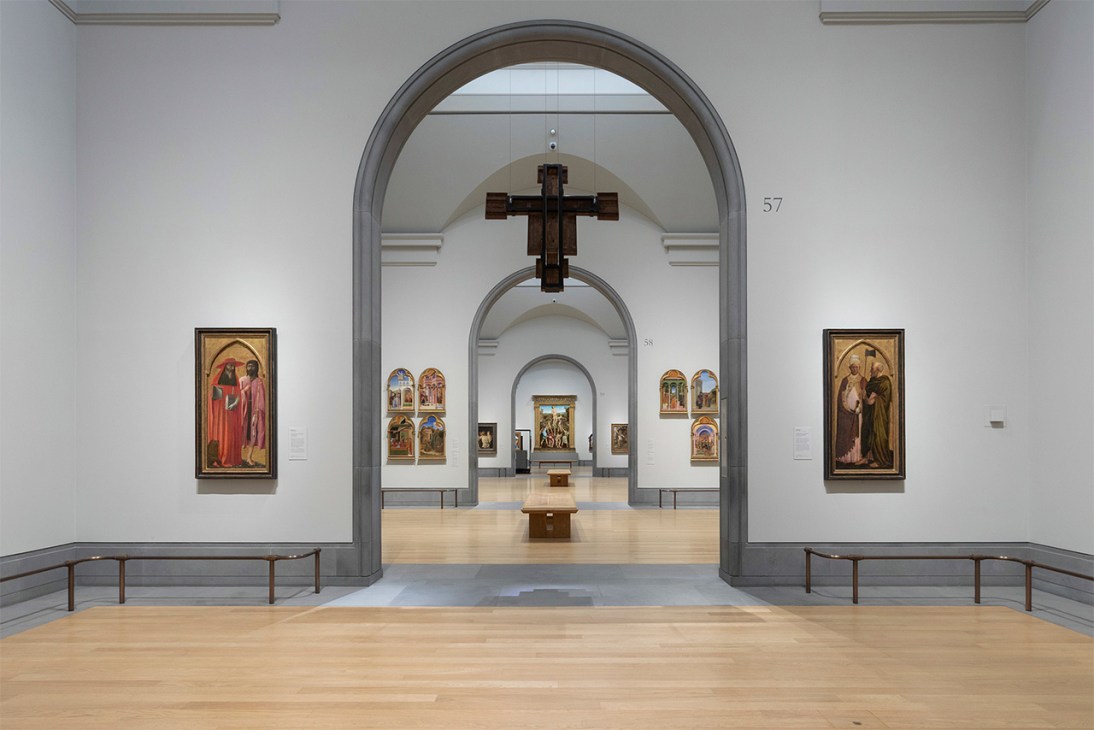
But the unsung heroes are the state-of-the-art metal security measures at the entrance. There has been a despicable spate of attacks on irreplaceable artworks, from Potsdam to Rome, Canberra to the National Gallery itself, where vandals masquerade as revolutionaries. Museums have been beefing up bag checks, banning liquids and putting yet more glass barriers and plainclothes officers between the public and what is supposed to be their collection. The new, nearly invisible metal detectors are a welcome return to a museum experience based, on the surface at least, on trust. I can feel free to enjoy the Old Masters without being searched like I’m about to throw a can of soup.
This year’s edition of the Parcours sector of Art Basel in Basel has been developed by Stefanie Hessler. Directed by the German curator for the second consecutive year, Parcours transforms unexpected areas across the city into exhibition spaces for artworks ranging from video installation, sculpture and large-scale collage. Churches, shopping centres and underpasses will provide viewers a chance to engage with these diverse works, whether you’re a well-heeled collector or simply a passer-by. Here, Hessler discusses this year’s Parcours theme, highlights from throughout the city and the importance of public art.

Tell us about the theme of this year’s Parcours.
I chose the concept of “Second Nature”, which I see as having multiple layers. The first layer considers the way humans have changed the world, blurring the boundaries between nature and artifice. The second layer illuminates the ways that gestures and habits form our behaviour and change our behaviour. Our movements and our gestures can become second nature to ourselves. The third layer explores the way that information flows – through algorithms and the circulation of images – and how that will continue to change who we are.
I invited artists whose projects specifically engage with these thematic layers. I’m particularly interested in the dialogue between the artist and the site, and many of the featured creatives work site responsively. For example, Shanghai-based artist Yu Ji has made something resembling a dinner scene for humans and non-humans to be shown specifically in the banquet hall of Hotel Rheinelderhof. Collaborating with both the artists and the owners of all the various sites that we’re using has been an organic process – we’re truly integrating these projects into the local fabric of Basel.
What’s the most unusual venue you’re using this year?
The underpass, where we’re showing a video by Sturtevant, is perhaps the most unconventional venue but I was happy that we were able to make it work. The project is a 21-metre-long projection of a running dog, with the image repeating every nine seconds in an endless loop. While Sturtevant was known for recreating works by other artists, later in her life, she became interested in the endless proliferation of images and information on the internet. The running dog is one of her most iconic works and I wanted Parcours to feel more intergenerational this year. Sturtevant’s work was key to my concept and the selection of artists. The installation is in an underpass right by the river – a place frequented by people walking their dogs — which makes it a great intervention in public space.

How important is it that Parcours is a public event?
Parcours is a free and open invitation to both visitors of the fair as well as local audiences. There’s a beautiful dialogue that unfolds between the international art world and the residents of Basel. I love how art can interject in everyday life and create moments of surprise throughout your day. We have moved Parcours closer to the fair, which brings more attention to this part of the city. There are a lot of shops in Klarastrasse and it’s not as picturesque as other parts of the city visited by tourists, but that is what’s great about it. It highlights everyday life in Basel, which I – and the artists that I’ve worked with – find really inspiring.
Has working on Parcours changed how you view the city?
The first time that I curated Parcours, I visited about 70 different sites and there are many more locations that I hope we can use for future editions. Like any city, Basel offers so much if you pay attention. It’s fantastic when artists create art with specific locations in mind because it directs our attention differently. There’s also a whole world underneath our feet where I’m hoping to stage projects during the next editions.
Read next: Five booths not to be missed at this year’s Art Basel in Basel
It’s all about context and working together at 3 Days of Design. That’s the message that was hammered home at this year’s event, which functions as Copenhagen’s de facto design week. Designers and brands presented work in galleries and studios across the city and the fair was billed by many as the biggest competitor to industry behemoth Salone del Mobile – and for good reason. It has grown year-on-year since its establishment in 2013 and is now drawing an international cohort, with Spain’s Santa & Cole and Italian firms such as Flos and Alpi all taking part.
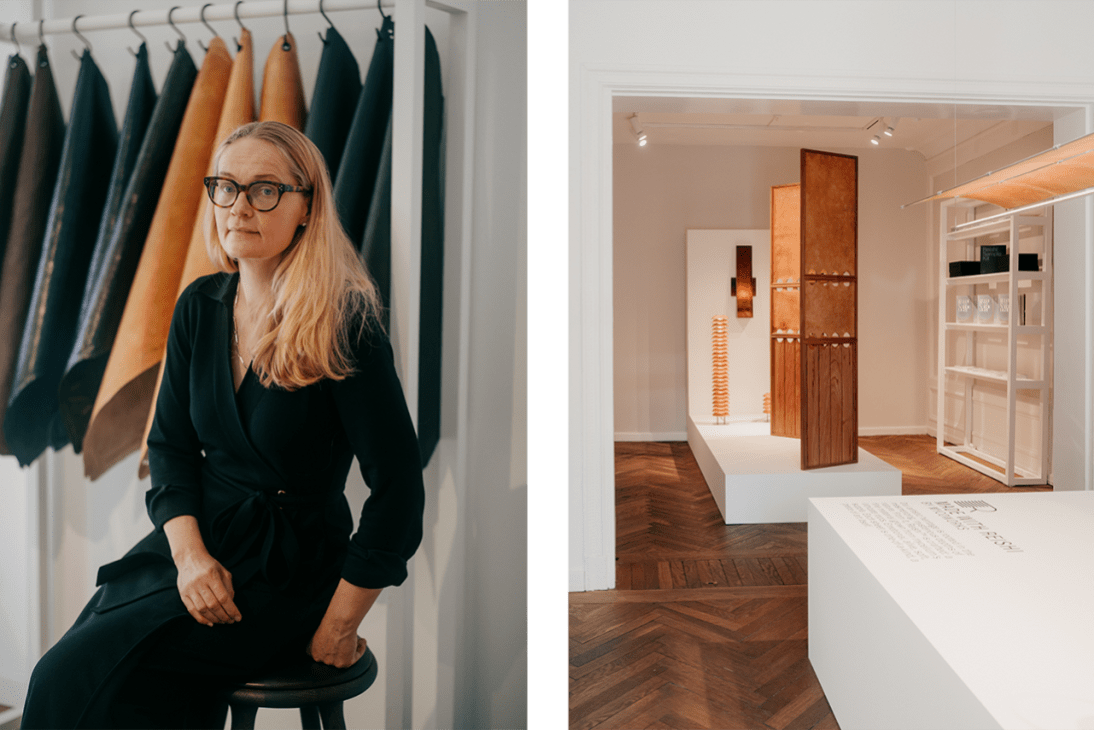
In truth, the two events are quite different: Salone del Mobile is focused on trade and the industry’s commercial side. Copenhagen, meanwhile, seems intent on putting the practice into context. “It’s rooted in the Danish way of thinking about design,” says Marie-Louise Høstbo (pictured above left), a Copenhagen-based creative director and curator. “Design is presented not as an event but as a lived, integrated part of daily life.” For proof, one only has to look at the showcase that Høstbo curated with Mycoworks, the company responsible for developing Reishi, a leather-like material created from mycelium (the root structure of fungi). Under Høstbo’s eye, the Californian brand worked with five Danish firms, including OEO Studio and Atelier Axo, to develop products that show Reishi’s practical applications. “We wanted to explore the potential of a new material – Reishi – while drawing inspiration from the historic principles of making functional, durable and beautiful designs,” says Høstbo. “OEO Studio’s glowing floor light, for example, invites us to see our interiors in a new way.”
OEO Studio’s Thomas Lykke (see Words With… below) agrees that the success of 3 Days of Design – and the Mycoworks showcase – lies in its ability to contextualise the industry. “Design is not only about aesthetics and chairs,” says Lykke. “It has its own vernacular and is a bridge to other cultures, understanding, sharing and questioning.”


So, is this what’s drawing people from across the world to 3 Days of Design? Gabriel Tan certainly thinks so. The Porto-based, Singaporean designer presented wares by his brand, Origin Made, in an apartment curated by Japanese furniture specialists Ariake and Spanish lighting manufacturer Parachilna (pictured above). In addition are rugs by Sera Helsinki and sculptures by Gen Taniguchi, master craftsman of the 300-year-old Nao Washi mill. “What is particularly striking is the open and collaborative spirit that is evident at 3 Days of Design, with brands regularly joining forces for showings because they understand that great interiors require lighting, furniture, textiles and objects working in harmony,” says Tan. “Why compete when you can create something more compelling together?” It’s a question those presenting – and attending – 3 Days of Design seem intent on answering.
Monisse is Monocle’s design editor.
To enjoy Monocle’s full city guide to Copenhagen, click here.
The point is simple: a great city is one that doesn’t over-nanny its citizens – and may even let them get away with minor infractions, as long as they know how to take care of the serious stuff. It’s the sign of a city that isn’t too tightly buckled and lets its citizens get on and live.
As someone residing in the bel paese, who enjoys the national sport of rule-bending that takes place in Italy, I’m campaigning for “colouring outside the lines” to be given consideration in our next ranking of the world’s most liveable cities. Indeed, the city where I abide, Milan, may have been in Monocle’s Quality of Life listing last year but didn’t make the cut this year. Of course you can’t please every metropolis, and each year we get people writing in to us making a case for why their home warrants inclusion. The case I wish to make on the Lombard capital’s behalf? Milan warrants inclusion for one vital quality of life metric: the freedom that it gives people to, well, just be.

Don’t get me wrong: I am a fan of the civic good-neighbourliness that exists in the UK and the rules-based order that the Nordics are best-in-class for. But as I come up on my fifth anniversary in Milan, I’m starting to appreciate the elasticity of rules (or rather, the interpretation of them) and the fact that you’re left to get on with things without too many people getting in your way – the police included. Milan manages to do all of this, while also being a design, fashion, business and finance powerhouse. In other words, it hasn’t descended into lawlessness in the process.
Take parking. When I first moved here I was horrified at the idea of briefly mounting a pavement in order to pack-up the car for the weekend, or double parking if you need to drop your child at school in the morning. But these things are generally deemed to be acceptable – and I have mellowed. On a recent trip to the park, I was forced (your honour) to leave my car in a temporarily questionable position which saw me following one of the the Italian rules that everyone can agree on: if someone else has done it before you, it’s fair game. I felt an odd, and slightly wrong, feeling of exhilaration that I had finally become a local – happily popping my car into a space that clearly wasn’t an official space at all, swerving to avoid a crowd of smokers flouting the “hardened-up ban” introduced earlier this year.
And yet, despite having lived everywhere from Buenos Aires to New York, something continues to niggle at my northern European soul. Maybe I really should be raging against the small contraventions that happen here. But then I fear all that stress wouldn’t be good for my quality of life at all.
Monocle’s 2025 Quality of Life shortlist has been revealed – but which cities pipped Milan to the post? To enjoy Monocle’s full city guide to Milan, click here.
In the past few years, a new generation of creatives has been flocking to Athens to discover its rich heritage – but also hoping to add a more contemporary flavour to its cultural landscape. Every corner of the city now offers the promise of discovery: a newly opened gallery, an elegant boutique, a buzzy bar offering the best of Greek wine. But what does a perfect afternoon in Athens look like?
To celebrate the launch of Konfekt’s new summer issue – a sunny edition that delves deep into travel, Greek craft and slow Mediterranean living – I recently experienced the city’s creative momentum first-hand with Lily Hanbury, co-founder of luxury footwear brand Le Monde Beryl.
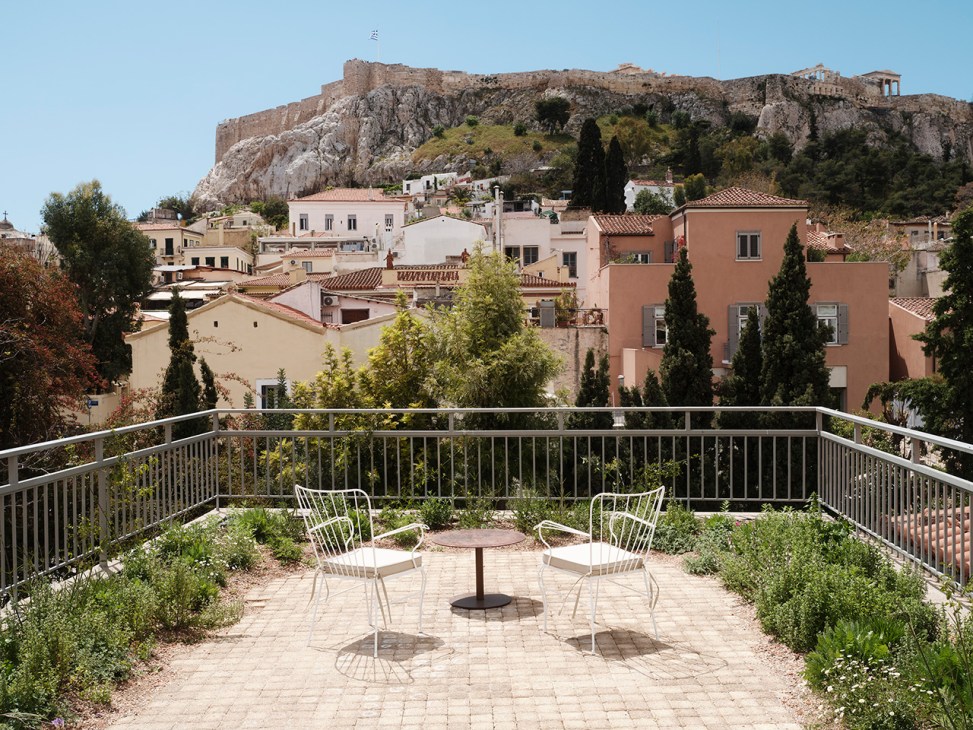


After a challenging climb up the steep marble steps of the Panathenaic stadium (Konfekt’s editor, Sophie Grove, and I were the only ones brave enough to ascend the staircase in the Athenian heat), we stopped for ice-cold freddo espressos at the Foyer Espresso Bar before moving onto the Cycladic Museum, where painter Marlene Dumas’s works were on display next to the permanent collection. The museum’s art historian, Deligina Prifti, explained that this was one of the first archaeological museums to develop such an ambitious contemporary-art programme; Louise Bourgeois and Ai Wei Wei are among those who have exhibited their works here over the years. Dumas was instantly drawn to the simple forms of the Cycladic figurines, as well as their lack of embellishment. By placing them next to her works, she sought to explore themes such as age, sexuality, the passage of time and the complexity of human relationships. “She believes in being part of a collective,” said Prifti.
A short walk away, the modernist work of Ron Nagle, one of Hanbury’s earliest sources of inspiration, was on display at the Melas Martinos Gallery. It felt as though there was a citywide conversation between the contemporary and the archaeological, the local and the international. This made Athens fertile ground for design inspiration.
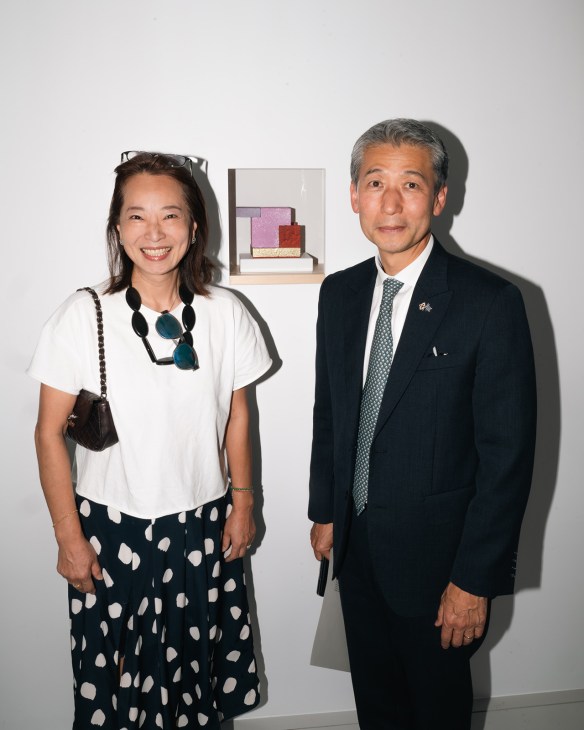
“The colours and the stories behind these works become a huge reference point for each collection, season after season,” Hanbury told me between our gallery visits. “But it’s also this idea of living a life of travelling and learning as much as possible. We create shoes that accompany you on that journey.”
A pair of Le Monde Beryl’s buttery-soft leather shoes are currently on display at Mouki Mou Athens, another recent addition to the city’s creative scene. Thanks to Mouki Mou’s founder Maria Lemos, a wider array of independent fashion labels, including Niccolo Pasqualetti and Los Angeles-based Dosa, is now more readily available in Greece.
Aside from a beautifully curated shop floor, Mouki Mou also offers one of the city’s best roof terraces, with panoramic views of the Acropolis. This was where we finished our day, with golden-hour drinks from the nearby Wine Is Fine bar and restaurant.
As the sun set over Athens, we toasted the new issue of Konfekt and celebrated with readers and friends: hoteliers shared news of their next projects; fashion designers spoke of plans to host summer pop-ups (make sure to catch Harilaos Kourtinos’s artisanal designs at The Rooster in Antiparos); and foodies shared tips (Goldie restaurant is the new name to know).
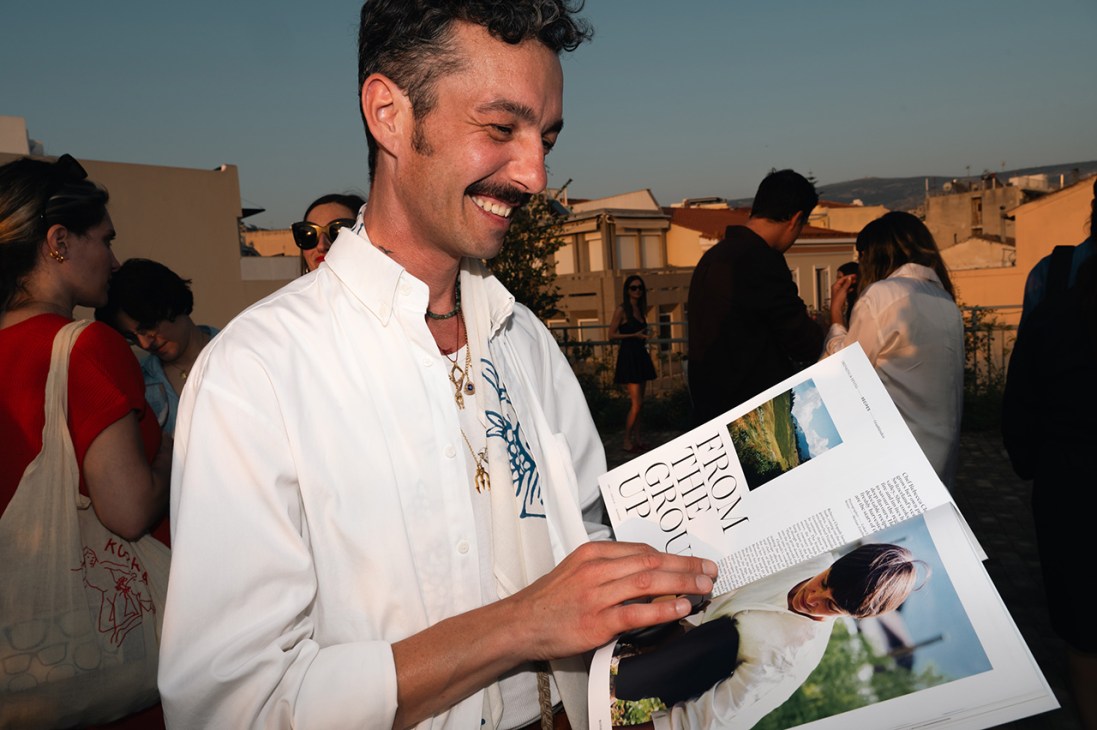
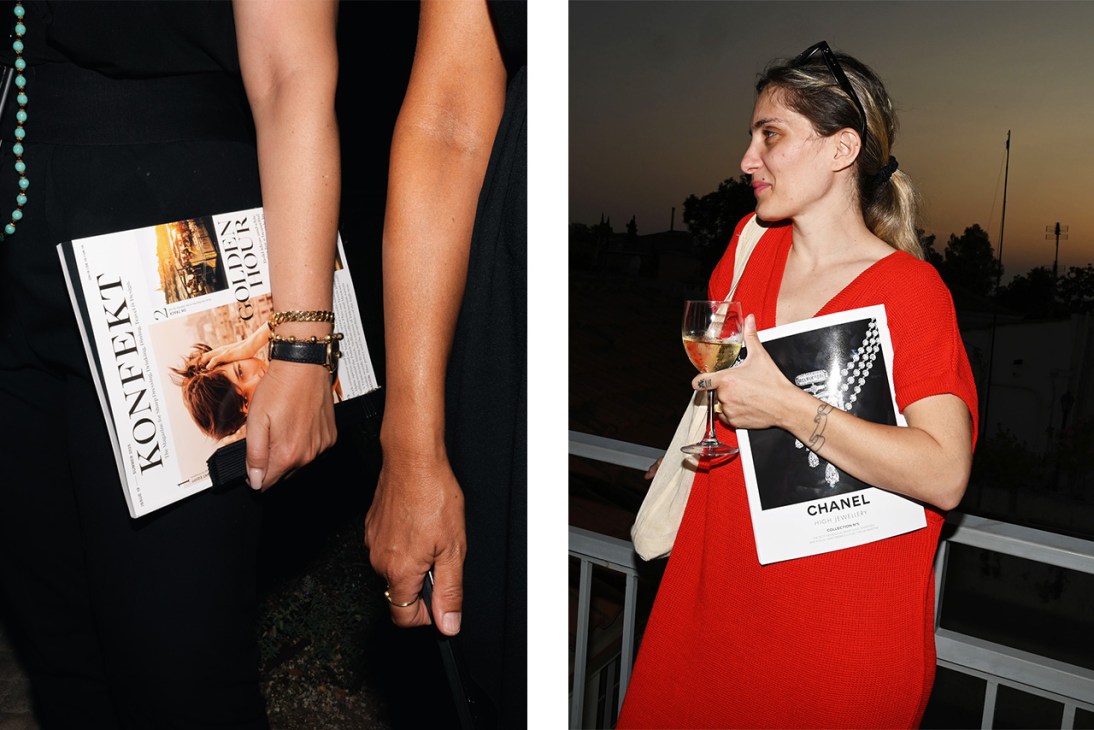
It’s time for Greece to be celebrated for all that it has to offer but, as the country steps further into the international spotlight, it will be up to this generation of creatives to sustain the momentum and manage the pace of growth.
See the Le Monde Beryl summer collection and read more about Athens in the new summer issue of ‘Konfekt’. To read Monocle’s full City Guide to Athens, click here.



